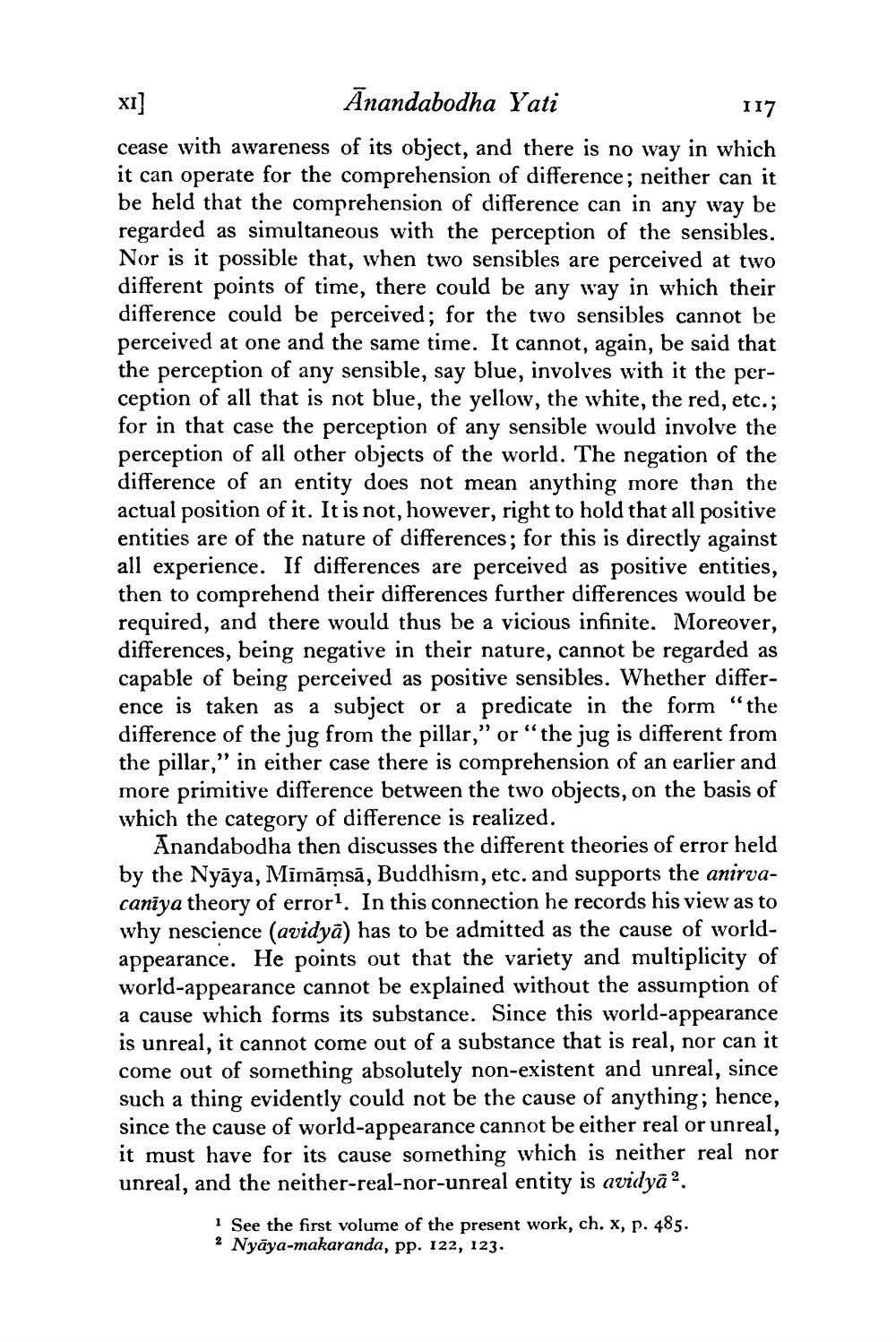________________
XI]
Anandabodha Yati
117 cease with awareness of its object, and there is no way in which it can operate for the comprehension of difference; neither can it be held that the comprehension of difference can in any way be regarded as simultaneous with the perception of the sensibles. Nor is it possible that, when two sensibles are perceived at two different points of time, there could be any way in which their difference could be perceived; for the two sensibles cannot be perceived at one and the same time. It cannot, again, be said that the perception of any sensible, say blue, involves with it the perception of all that is not blue, the yellow, the white, the red, etc.; for in that case the perception of any sensible would involve the perception of all other objects of the world. The negation of the difference of an entity does not mean anything more than the actual position of it. It is not, however, right to hold that all positive entities are of the nature of differences; for this is directly against all experience. If differences are perceived as positive entities, then to comprehend their differences further differences would be required, and there would thus be a vicious infinite. Moreover, differences, being negative in their nature, cannot be regarded as capable of being perceived as positive sensibles. Whether difference is taken as a subject or a predicate in the form "the difference of the jug from the pillar," or "the jug is different from the pillar," in either case there is comprehension of an earlier and more primitive difference between the two objects, on the basis of which the category of difference is realized.
Anandabodha then discusses the different theories of error held by the Nyāya, Mimāmsā, Buddhism, etc. and supports the anirvacanīya theory of error. In this connection he records his view as to why nescience (avidyā) has to be admitted as the cause of worldappearance. He points out that the variety and multiplicity of world-appearance cannot be explained without the assumption of a cause which forms its substance. Since this world-appearance is unreal, it cannot come out of a substance that is real, nor can it come out of something absolutely non-existent and unreal, since such a thing evidently could not be the cause of anything; hence, since the cause of world-appearance cannot be either real or unreal, it must have for its cause something which is neither real nor unreal, and the neither-real-nor-unreal entity is avidyā”.
i See the first volume of the present work, ch. x, p. 485. 2 Nyāya-makaranda, pp. 122, 123.




